|
|
Post by Franklin1 on Dec 2, 2007 20:51:44 GMT 10
HAWTHORN INFORMATION:On Jul 11, 2006, starfire wrote: Can anyone out there help me with info on Hawthorn Caravans made in Melbourne by George Brough. Framed plywood with a canvas roof. I have a model #12 single axle on 16" wheels with cable brakes that I intend to restore at some stage. Love Aussie Vans replied: I had a look through my old Keith Winser books and found a photo of a Hawthorn 13' with alumium roof and some ads for the van from a dealer. Not much other info I'm afraid. starfire replied: I was starting to think that I had the only Hawthorn in existance! The van that you mention sounds a bit later than ours but any info at all would be gratefully appreciated. Our van is about 12' and has a Doped canvas roof with leadlight windows. 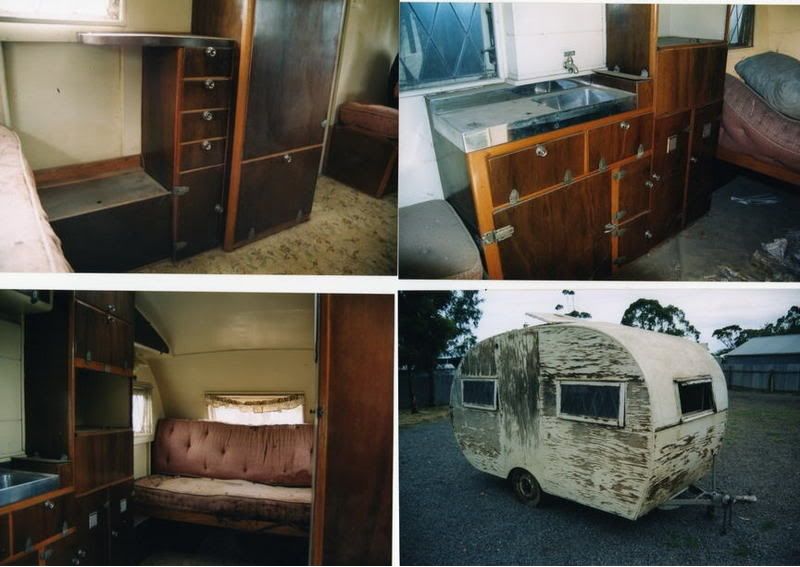
|
|
|
|
Post by Franklin1 on Dec 4, 2007 21:19:39 GMT 10
Posted by cobber, Oct 20, 2005: According to the 1960 “Australian Motor Manual” Current Caravans price list I am
looking at there was a “Hawthorn” Caravan, made in Victoria.
|
|
|
|
Post by exocet on Dec 5, 2007 14:49:46 GMT 10
Hi Franklin1, in my Keith Winser 1956 touring manual they list the Hawthorn caravan. Built by Les Gough and Sons in Hawthorn Vic, they were built in a range from 9 ft thru to 18ft, in either bondwood or aluminium. All van's were lined and the better ones had polished walnut fittings. In the photo they are very similar to the early Don caravan, including the leadlight windows. Hope the info helps
Cheers Exocet
|
|
|
|
Post by Franklin1 on Dec 9, 2007 17:02:27 GMT 10
Hawthorn caravan: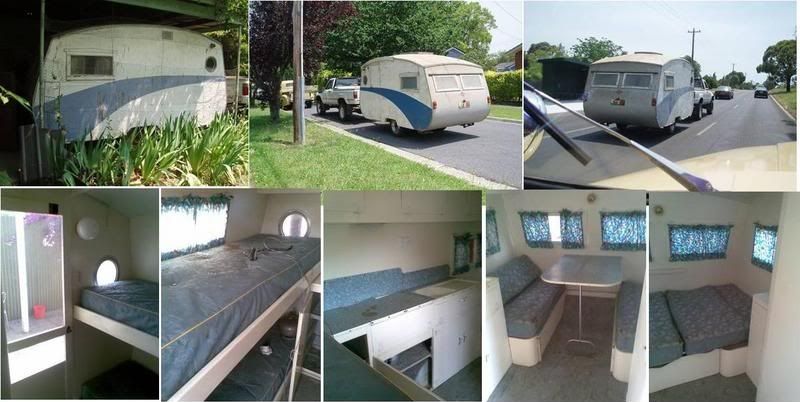 (source: posted by kb3, Dec 8, 2007. Awaiting further details...)
Photo of Kb3's Hawthorn posted on 11 June 2008...I did get a pile of photos from the original owner of our van, here is one of them on a holiday up in the top end 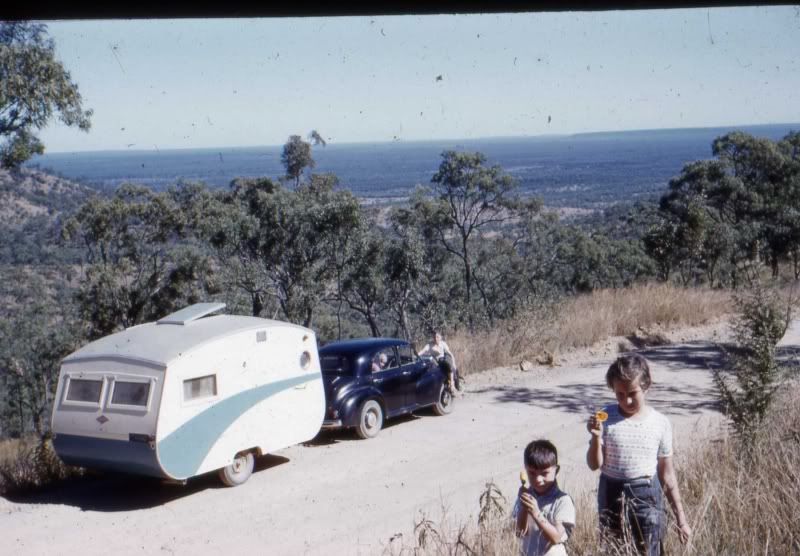
|
|
|
|
Post by Don Ricardo on Apr 22, 2008 10:11:52 GMT 10
Following is the photo and information referred to by Exocet in Reply #3 above: 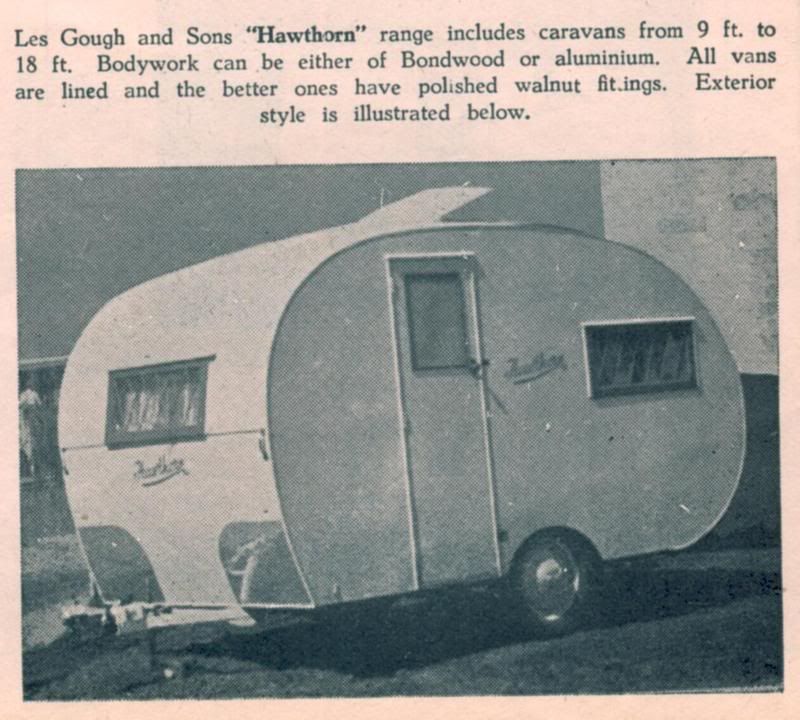   (Source: Keith Winser, Australian Caravan & Touring Manual for 1956, pp 111 & 82) (Source: Keith Winser, Australian Caravan & Touring Manual for 1956, pp 111 & 82)This caravan appears to be indentical in design to Starfire's caravan which starts this thread. Note the leadlight windows, the right-hand opening door, and the comment in the text about "the better ones" having polished walnut fittings (which also features in Starfire's van). As Exocet has commented the van in this picture very much follows the style of Don caravans, even down to the leadlight windows. However the later models, such as KB3's, follow the design of South Australian caravans. It has been suggested on the forum that later Hawthorns look very similar to Rowvans and Playtimes, and that raises the question of whether these later Hawthorns were actually badge engineered Rowvans. Comments are welcome. Don Ricardo |
|
|
|
Post by cobber on Jun 8, 2008 11:13:29 GMT 10
Don,
I just thought it would be worth noting that the above photo of the "Hawthorn" out of a 1956 magazine is exactly the same as appeared in the 1948 Caravan & Touring book, so Starfire's 'van could be that old.
Does anybody know what happened to Starfire.... or his caravan
Cobber.
|
|
|
|
Post by Don Ricardo on Jun 10, 2008 23:06:19 GMT 10
Does anybody know what happened to Starfire.... or his caravan Cobber. Hi Cobber, I noted your question about Starfire, and had been wondering much the same, so I sent him an email. He has replied as follows: "The Hawthorn van that I have is still in existance but I have just recently passed it on to a friend who has the time and skills to restore the van and tow it behind either his FJ trayback ute or HD Holden sedan. He is a retired carpenter and cabnet maker so the plywood van will be right up his alley."Hopefully the new owner will join the V V forum and show us his handiwork at some stage. I think this is the only leadlight window Hawthorn we know about so it will be excellent if it is preserved. The interior seemed to be in quite good nick, but from the photos there appeared to be a bit of work needing to be done on the exterior. Don Ricardo |
|
|
|
Post by Don Ricardo on Oct 28, 2008 19:11:09 GMT 10
1956 Hawthorn advertisement: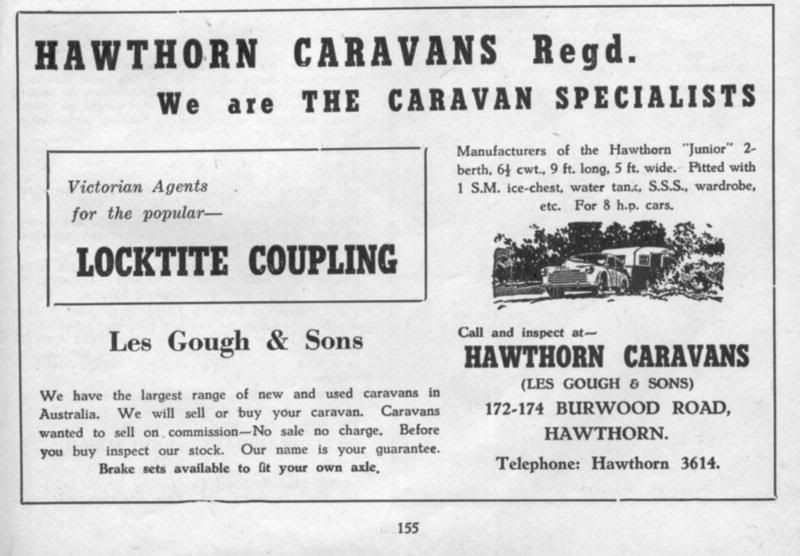 (Source: Keith Winser, Australian Caravan & Touring Manual for 1956, p 155) (Source: Keith Winser, Australian Caravan & Touring Manual for 1956, p 155)Les Gough & Sons not only produced Burwood and Hawthorn caravans but also acted as an agent for Jennison Pathfinder caravans, was connected in some manner to Burwood caravans, and sold other caravan parts and accessories: 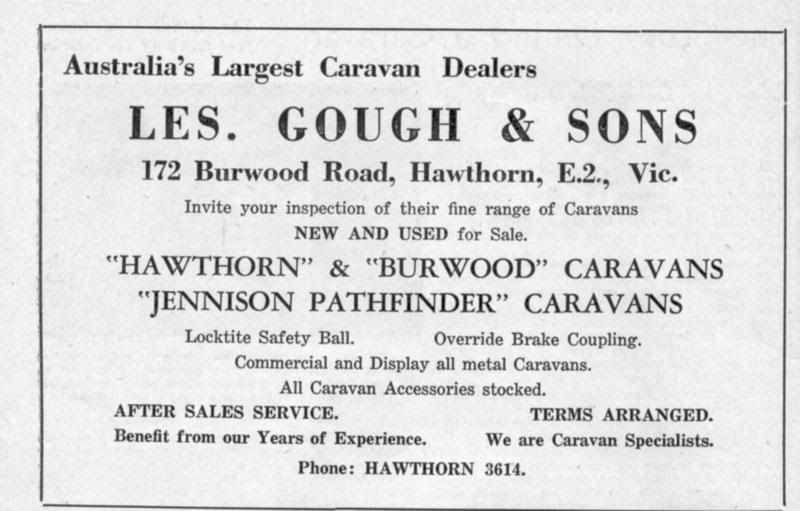 (Source: Keith Winser, Australian Caravan & Touring Manual for 1956, p 144) (Source: Keith Winser, Australian Caravan & Touring Manual for 1956, p 144)
|
|
|
|
Post by firefighter on Nov 13, 2008 8:23:05 GMT 10
|
|
|
|
Post by Don Ricardo on Nov 15, 2008 21:37:58 GMT 10
G'day Firefighter, That's an interesting Hawthorn advert you've posted from Royalauto. What I find interesting about it is that it is dated August 1956 and shows what we assume to be a Hawthorn badged Rowvan. In contrast the extract from Winser in Reply #5 above was also published in 1956 and shows one of Hawthorn's own vans which, as Cobber pointed out, had been in production in the same form since the 40's. So, the question is: Why were pics of two different vans published in the same year? It seems to me from reading the Winser manuals that the info in them was sometimes quite a few months old by the time it was published. I am therefore guessing that 1955/56 was the time of transition for Hawthorn when they stopped selling their own vans and started selling the re-badged Rowvans instead, and that by August 1956 or thereabouts the older Hawthorn van with the leadlight windows had been superseded by the new vans sourced from Rowvan. Just a theory... The other interesting thing about the Royalauto advert is that it shows the Hawthorn diamond shaped nameplate. Previous Hawthorns seem to have had the brandname signwritten on them. This is the nameplate from Lacem's Hawthorn which she posted in May 2008:  The nameplate on the back of KB3's Hawthorn (taken from the pics above) is painted red: 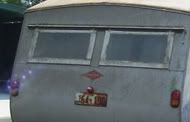 I am guessing (again) that Lacem's nameplate was also originally done in red enamel but the paint has weathered away? Don Ricardo |
|
|
|
Post by JBJ on Nov 16, 2008 19:02:03 GMT 10
Hi Don,
My thoughts are that where a van has a badge or sticker that says " SUPPLIED BY", the van is most likely to have been made by someone else, & just marketed under the sellers name.
All proprietary name plates/stickers that I've seen on vans that were sold by the builder do not have " SUPPLIED BY" on them.
Sunliners where sold under many resellers names, & lots of others likewise.
We found a van near Canungra in SE Qld recently that had "ORFORD" badges in white plastic with red raised plastic letters the other weekend. Supposedly originally registered as a 1962 Orford.
But it looked so similar to Earlees 1964 Franklin that it could have been a rebadged Franklin. It was definitely built in Brisbane, as David Forman remembers the caravan yard Orfords had in the early 60's. The windows had ID stickers from a Brisbane manufacturer.
Theres so much out there we will never be able to find out about.
JBJ
|
|
|
|
Post by Don Ricardo on Nov 18, 2008 18:50:52 GMT 10
Hi JBJ,
I agree with what you say regarding the implications of the words "supplied by" on the Hawthorn nameplate. In fact we know that in the 50's not even the works "manufactured by" necessarily meant that the company concerned actually physically built the vans in question. Both Farrell's Caravan Centre and Playtime adverts claimed that they were the manufacturers of the vans sold under their respective names, but we know with a high degree of certainty that the vans they sold were built by Rowvan (or somebody else in the case of some of Farrell's vans).
By the same token I am beginning to question the idea that Hawthorn's post-'56 vans were actually built by Rowvan, which is what we have tended to think. I have a few reasons for making this comment which I will elaborate on in a post before long. That's not to say that the vans weren't sourced from somebody else, mind you...
As you say, some things we will never know, but it's a lot of fun trying to find out. ;D ;D ;D
Don Ricardo
|
|
|
|
Post by Franklin1 on May 24, 2009 23:03:44 GMT 10
A 1945 classified advertisement for Hawthorn caravans...  The advert appeared in an August 1945 edition. This was the first one showing both Sales or Hire. Prior to this one, there were a number of previous adverts saying they hired out vans, as per this example in March 1945...  [National Library Australia - Melbourne "Argus" 1945 08 25 19 and 1945 03 03 18] |
|
|
|
Post by Don Ricardo on Aug 13, 2010 22:42:46 GMT 10
Photos of Hawthorn caravan owned by Kustombruce posted on 27 June and 3 July 2010: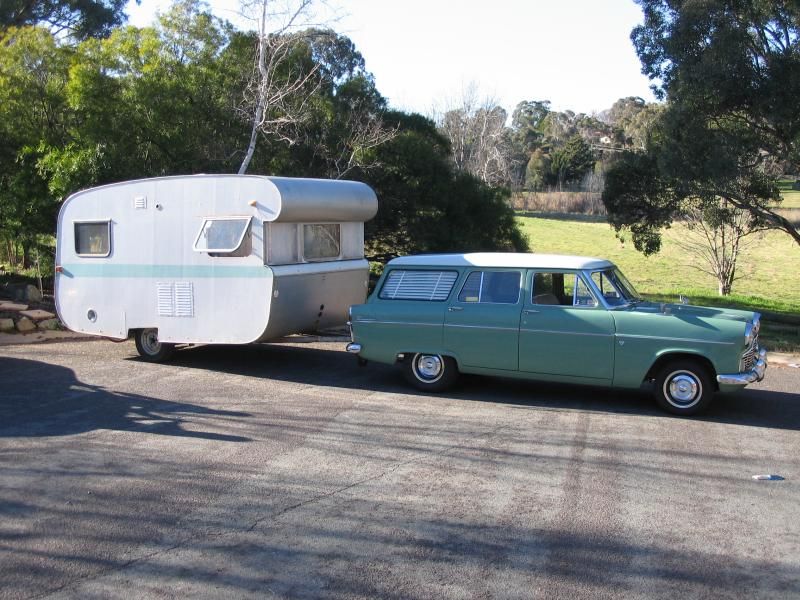  Faded Hawthorn name outlined in pen by Kustombruce:  For further photos and info about Kustombruce's van click here
Information provided by Tenoroc on 4 August 2010 regarding Kustombruce's van:Hi Bruce & Kath I spoke to dad last night and he confirmed that your Hawthorn was made by Coronet. They made vans for Hawthorn who on sold some to Roma until Roma went direct to Coronet. Dad said that a large number of the brands on the forum never made vans, but re-badged others. Franklin also made vans to be re-badged. If your van has a chassis number then the chassis was made by Coronet, if not it was made by an outside trailer company. I am not sure when they started to make there own chassis but it was early sixties. I hope this information is of interest to you. Regards David
Kustombruce's Hawthorn has been referred to as both a 1958 and a 1960 model, however Coronet did not commence producing caravans until 1959 so - based on Tenoroc's info - the Hawthorn could not be any older than that.
|
|
case
Junior Member
 
Posts: 81
|
Post by case on Dec 12, 2010 16:41:18 GMT 10
Spotted a Hawthorn caravan about 1 month ago in the Bairnsdale
area very square looking with all corners rounded, clad with flat aluminium and what appears to be angle iron roof framing, the door was off laying in the grass, judging by the windows about 1955 or thereabouts, full of junk could not see the inside.
Had a Hawthorn nameplate with the no 1113 location Wuk-Wuk
Condition derelict.
|
|
|
|
Post by Don Ricardo on Jan 17, 2011 17:46:22 GMT 10
Hawthorn caravan restored by Don257 and owned by Cadishak: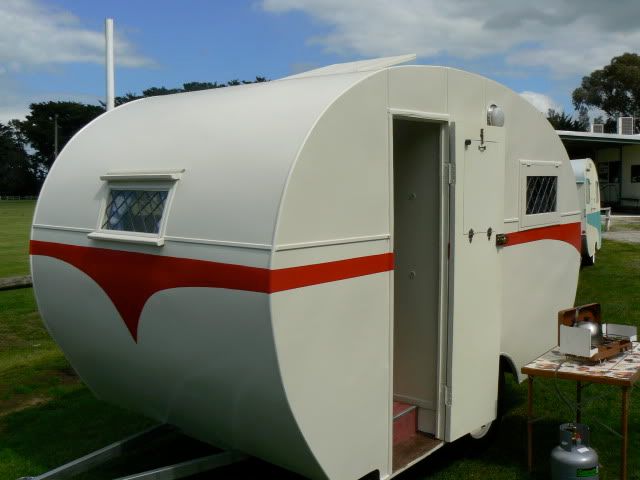  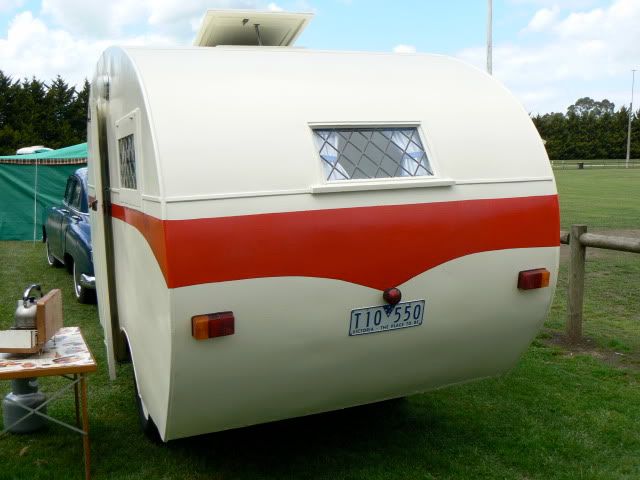  Detail of icebox catch: Detail of icebox catch: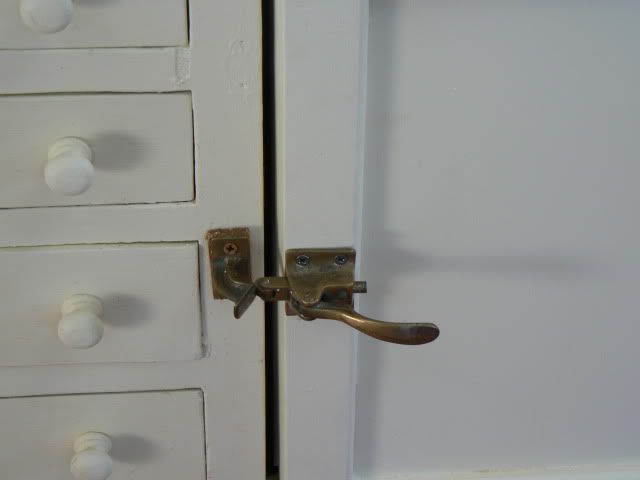 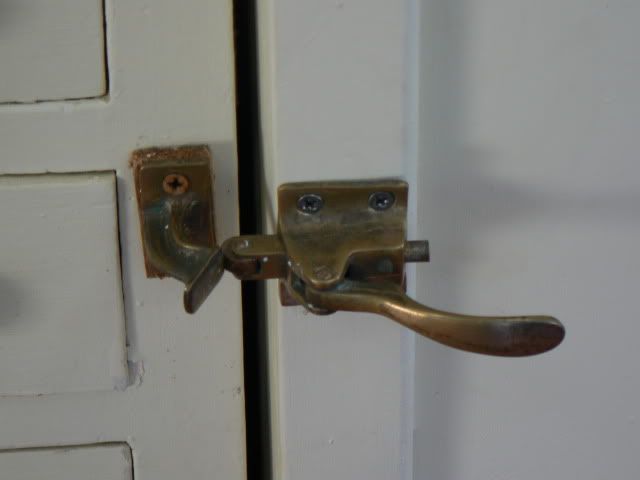
|
|
|
|
Post by Don Ricardo on Sept 13, 2011 22:58:28 GMT 10
Ok Lasses and Lads, It's at least a week since we had a bit of controversy on the forum, and Cobber, Reddo and Daggsey are being particularly restrained at the moment, so I guess it's up to me... What topic to choose? Slot head screws vs phillips head? Nah, it just gets the Slothead Society cross...    Acrylic vs oil-based paint? Nah, as boring as watching paint dry...    Bondwood vs aluminium vs fibreglass? Nah, everybody knows which is best...    I know... Who built Hawthorn's South Oz-sourced vans? That's controversial!    Oops, 75% of the people reading this thread just moved onto the next post... Nevermind, press on. Oops, 75% of the people reading this thread just moved onto the next post... Nevermind, press on.    The story so far... We know that Les Gough of Hawthorn caravans built his own vans in the 40's and 50's. In the mid-50's he began to sell vans sourced from South Australia wearing a Hawthorn badge, and then in the 60's became a dealer for a variety of different vans produced by other companies. The question is, who built the South Oz-sourced vans he sold in the mid-50's like this one owned by KB3 (AKA Chev51): 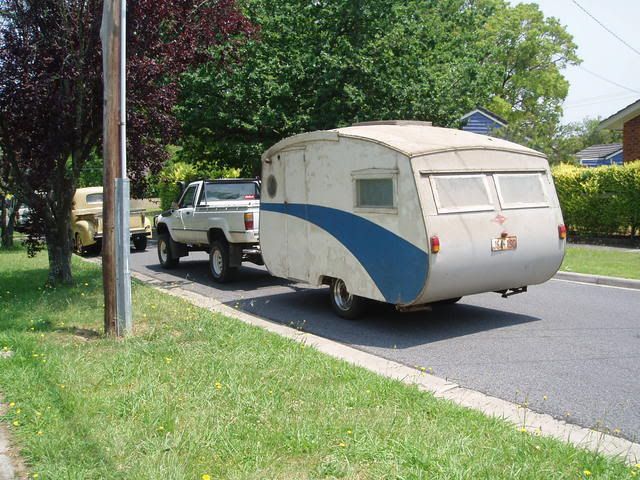 The accepted wisdom on the forum for quite a while has been that this style Hawthorn van was built by Rowvan, and there are quite a few similarities - double cambered roof, porthole window, Tudor ceiling, overall shape. And we know that Rowvan produced vans that were sold under other names - Playtime and Farrell Caravan Centre. However, I have had some doubts for a while about the Hawthorns being built by Rowvan as I expressed in Reply #14 above. I have recently done some research on the history of Rowvan, and am now 110% convinced that the Hawthorns were not built by Rowvan. Let me explain why... Oops, some more readers just skipped onto the next post...    There are only three people left. Nevermind, press on. There are only three people left. Nevermind, press on.    1. Overall side profile of the Hawthorn 1. Overall side profile of the HawthornIt is often difficult to find photos of two different caravans taken from the same angle which allows you to make a direct comparison. Fortunately, though I have found pics of a Hawthorn and Rowvan which allow the two to be compared. Both of these vans are very typical of their marque, ie I can show you other examples of each which are identical. Lacem's Hawthorn Trodler's Rowvan Trodler's Rowvan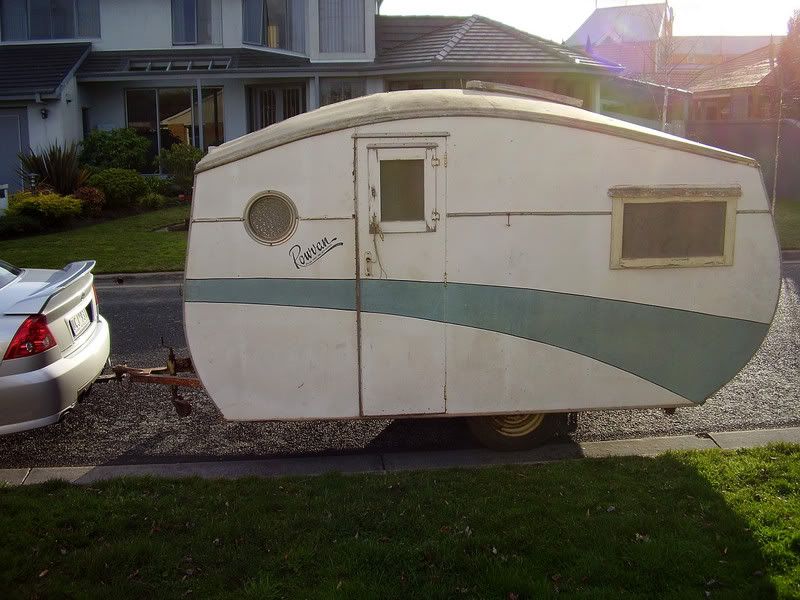 The overall shapes of the two vans are not dissimilar, but note the following: - The widest part of the curve on the rear of the Hawthorn is in the bottom half, whereas on the Rowvan it is in the middle.
- The Hawthorn has an external wheel arch, whereas the Rowvan does not - the bottom edge of the side wall runs in a straight line from the front to the back (more about that later).
- The Hawthorn's front and rear wall meet the side wall in an uninterrupted curve (more easily visible in the pic of KB3's Hawthorn), whereas the Rowvan's front and rear wall meet the side wall with a distinct angled corner.
- The Hawthorn door does not have a ventilation hatch built into it, whereas the Rowvan does.
- The Hawthorn's side wall does not have a visible join, whereas the Rowvan has a horizontal join covered by quad.
- The Hawthorn has a power inlet to the left of the door and above the porthole window, whereas the Rowvan does not have a power inlet in that location (nor on that side of the van).
2. Front and rear windowsHawthorn caravans all have a single front window and double rear windows. Lacem's Hawthorn - front window: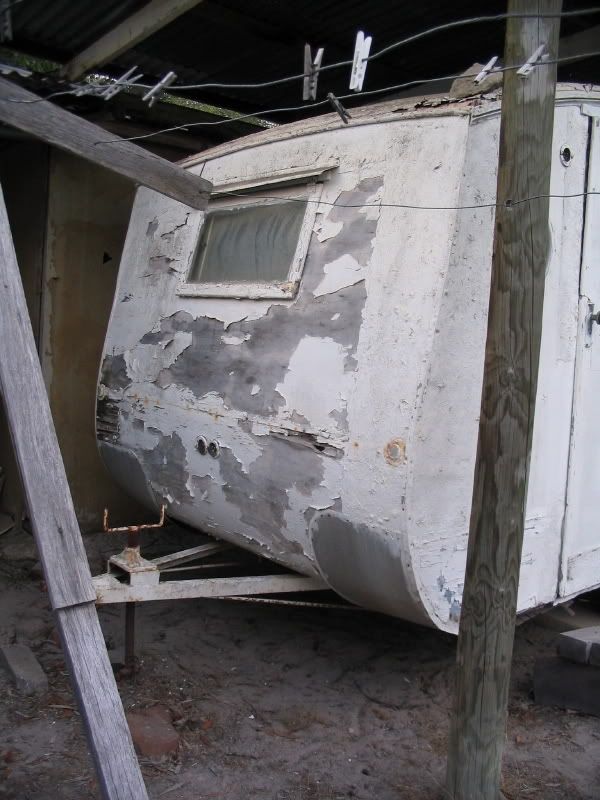 KB3's Hawthorn - rear windows: KB3's Hawthorn - rear windows: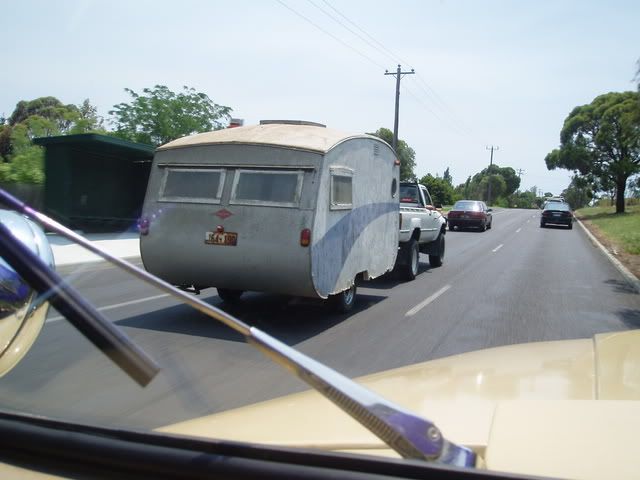 These windows match up with the internal layout of the Hawthorns, which had front bunk beds and a rear dinette/double bed. In contrast, Rowvans had double front windows and a single rear window, as shown by Neilncheryl's Rowvan: 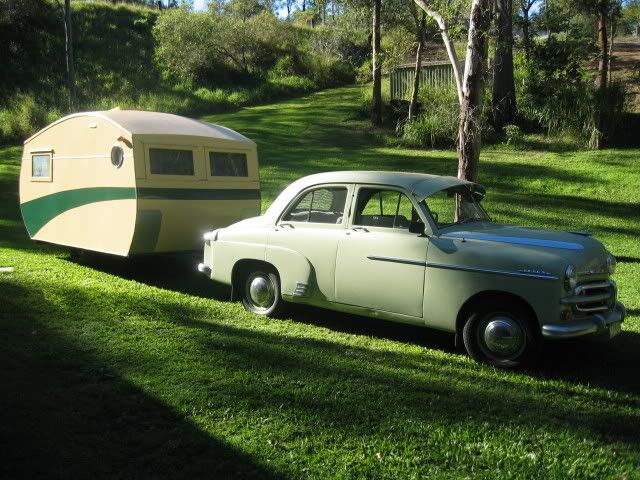 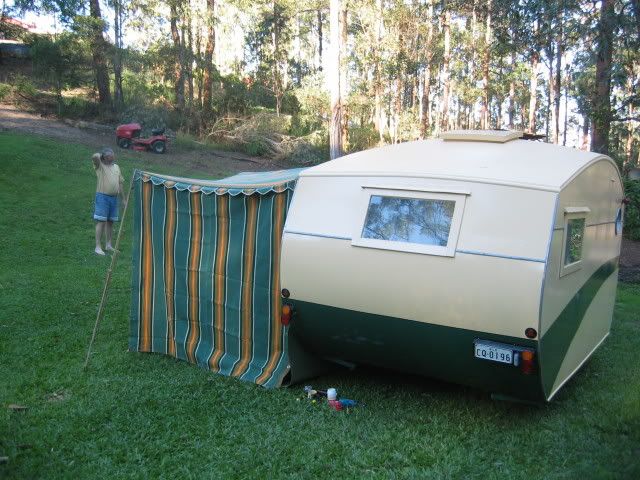 Rowvan's smaller models may have had front bunk beds, but all the examples shown thus far on the forum have had a front dinette/double bed teamed with a rear divan (and in one case what appear to be a second rear dinette/double bed). 3. Stove alcove and sinkOne of the identifying characteristics of all Rowvans up until the late 50's was a distinctive stove alcove accompanied by a stainless steel sink, seen here in Roehm3108's Rowvan: 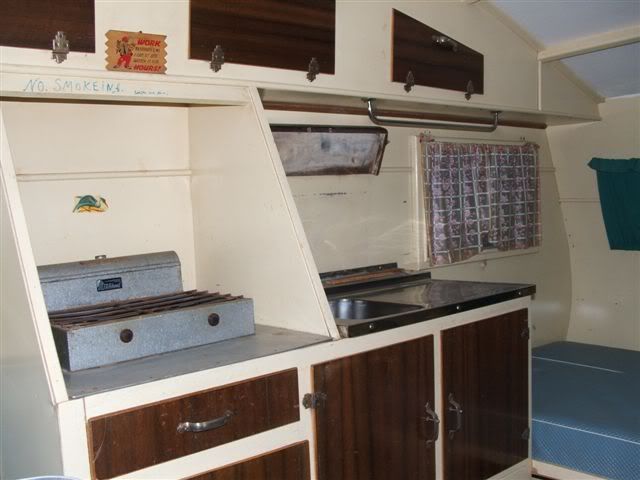 In contrast, the Hawthorns did not have this alcove, but instead had a flat benchtop with the stove hidden under a lift up lid and a plastic or enamel(?) sink, as seen in KB3's Hawthorn: 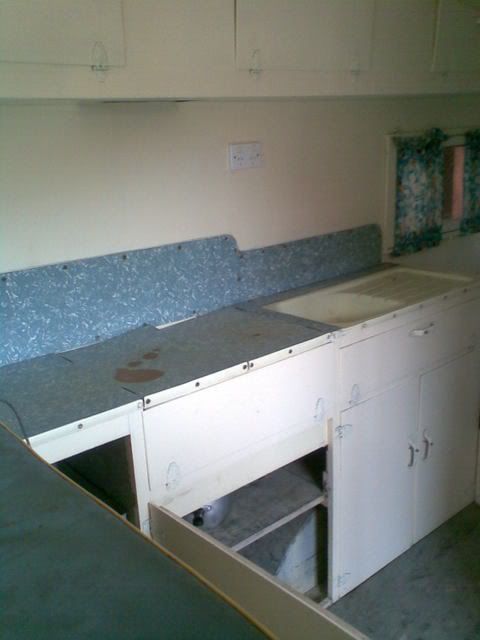 At first I thought KB3's kitchenette may have been modified but the kitchenette in Lacem's Hawthorn, and a derelict Hawthorn photographed by Surf Tragic are identical, right down to the colour and shape of the laminex splashback: Lacem's Hawthorn: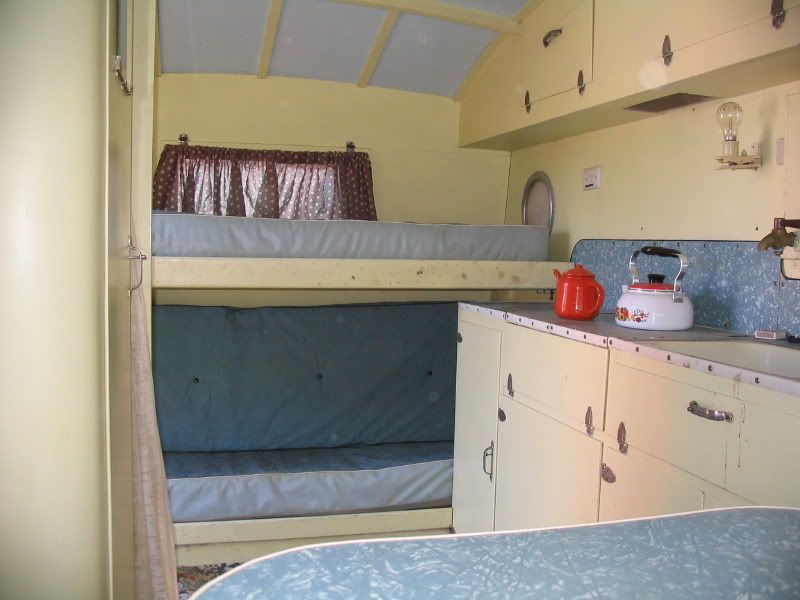 Derelict Hawthorn sighted by Surf Tragic: Derelict Hawthorn sighted by Surf Tragic: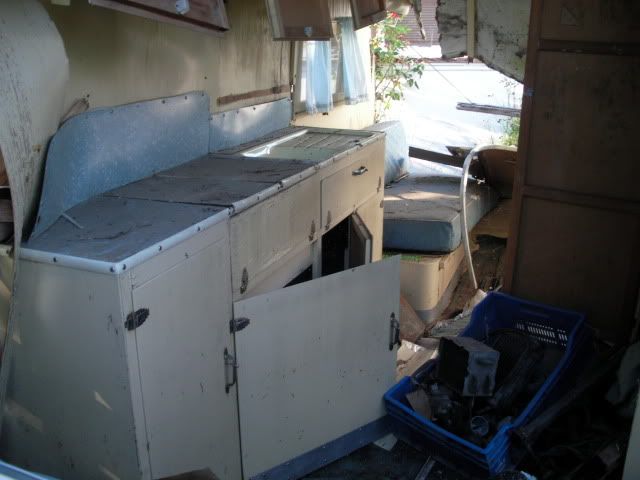 4. Roof hatch 4. Roof hatchHawthorns appear to have a roof hatch which was hinged at the rear of the van, as shown in this photo of KB3's Hawthorn provided by a previous owner:  In contrast, Rowvans appear to have a front hinged hatch, as shown in the photo of Neilncheryl's Rowvan: 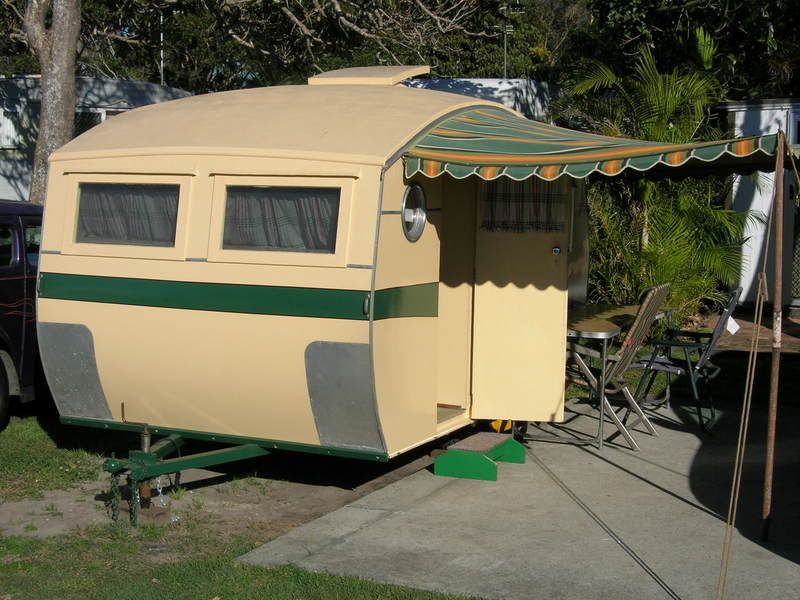 This point of comparison is more tentative because I only have one example of each marque, and it is possible that one or other of the hatches have been "re-orientated" at some point, but perhaps some of the Rowvan owners can tell me whether their hatches are identical to Neilncheryl's.
OK, so there are some major differences between the Hawthorns and Rowvans. But, what if Rowvan incorporated the differences we have observed into the vans they built for Hawthorn to meet the requirements of Les Gough? The answer to that is that I believe the differences are too great, especially in terms of what we saw regarding the side profiles of the two vans. Certainly changes were made over time - for example external wheel arches were introduced on Rowvans around 1957. But all the evidence we have on Rowvan is that the vans sold under the names of Rowvan, Playtime or Farrell at any given time were identical - only the seller's name on the van was changed. So if the Hawthorns weren't built by Rowvan, who were they built by? That is a question yet to be answered. Lazza, who owns Roadmaster caravans, has told me that a number of caravan builders in South Australia built caravans in the 50's that were so similar that it is sometimes hard to tell them apart.    I do have a theory though, and that is that the Hawthorns may have been built by Adventurer. This theory is based on very flimsy evidence! Check out this later model Adventurer (later model as shown by the Bosse & Eunson style windows): 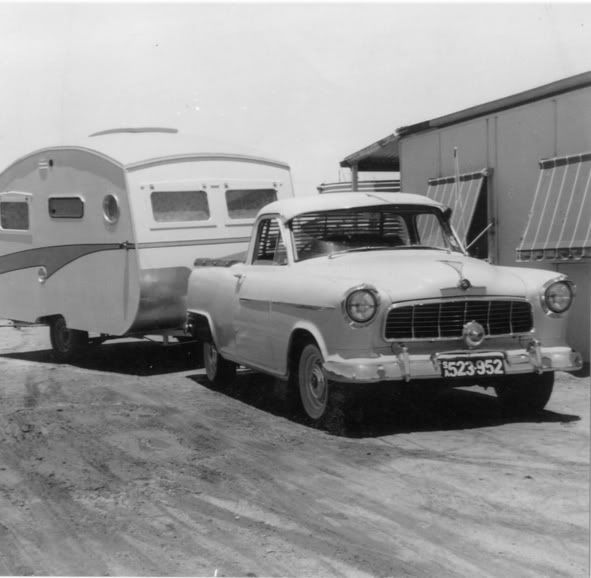 Note the upside down V-shape trim above the rear side window. Now compare that with the trim above the window of KB3's Hawthorn. Same upside down V-shaped trim    : 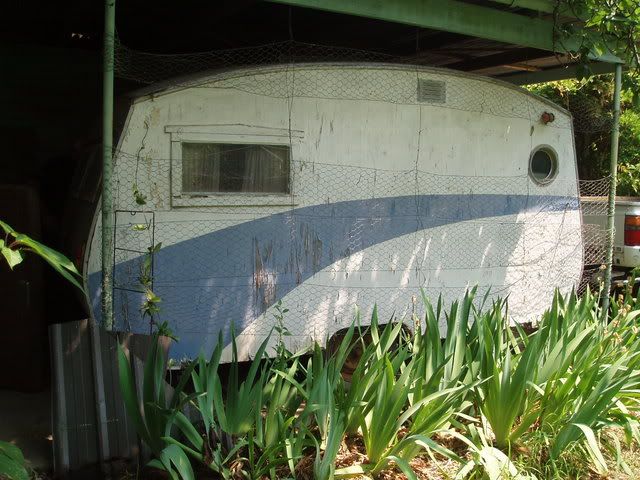 Alright, so almost every other bit of the more modern Adventurer contradicts what I've said in the post about the Hawthorns, but hey, it's a theory!! I'm interested in other people's thoughts about any of the above. It contradicts our accepted wisdom about the South Oz-sourced Hawthorns, but what do you think? Any alternative thoughts? Oh, and by the way...if you read this post all the way to the end - thanks!    Don Ricardo |
|
|
|
Post by seeshell on Sept 14, 2011 9:37:47 GMT 10
Hi Don
Gosh, I've got a headache scrolling up and down looking at the pictures you've put up comparing Hawthorn, Rowvan and Adventurer vans!
I'll preface anything I say here with this caveat - I know nothing, so I may be focussing on things that really don't matter.
Front Window(/s): The Hawthorn was different to both the Adventurer and the Rowvan in that it only had a single front window. It was hard to tell in the pictures of the Hawthorn if it had the inverted V moulding above (looks as if a metal lip has been added at some stage). [glow=red,2,300]No MATCH[/glow]
Side Window: Both the Hawthorn and the Adventurer have a side window with inverted V moulding, and the Rowvan does not - it has a metal eyebrow. [glow=red,2,300]MATCH[/glow]
Electric Inlet: This is a bit hard to see, but it looks as if the Hawthorn has it's power inlet on the front of the van - the Adventurer has it on the left side as you look at the van and I think the Rowvan does as well (up high). [glow=red,2,300]No MATCH[/glow]
Wheel Arches: While both the Adventurer and Hawthorn have wheel arches (the Rowvan doesn't - until 1957!), the Adventurers are more forward angled when compared to the Hawthorn, which are open but have a flatter top. [glow=red,2,300]No MATCH.[/glow]
Split/Farm Door: I noticed that the Rowvan had a split door, but the Hawthorn did not - from the available pictures of Adventurers, I can't tell if they did or did not have a split door. [glow=red,2,300]UNDETERMINED.[/glow]
Water Filler: Again, the pictures are a bit unclear, but it looks as if the Hawthorn does not have a water filler on the left hand side of the van, which the Adventurer does (can't recall about the Rowvan...getting dizzy!). [glow=red,2,300]No MATCH.[/glow]
I was wondering about what Lazza said about so many of the SA vans being so alike they were hard to tell apart, and why that might be so.
Perhaps the reason there are only small differences between them is that they all stuck to a design that was popular with the locals? However, to avoid being sued or taken to court over design infringements they made slight adjustments - but no so much that the salesman wouldn't be able to say it was "just like a....."
If that's the case, the builder could have been Adventurer, or anyone other enterprising person who saw the benefit in copying something popular.
Interesting thread - Thanks, Don, for the brainteaser!
Cheers
Seeshell
|
|
|
|
Post by Roehm3108 on Sept 14, 2011 14:04:44 GMT 10
So DR - The wife was busily prepping for Sunday and locked the door on you so you wouldn't annoy her, and you thought "who else can I annoy???". And the first answer was "the VV forum - I'll give them a brain tickler ;D  " DR, you HAVE to get a hobby!!!!! What I'm rather intrigued by is that you didn't do the camparison on the origins of the Don257/Cadishak Hawthorn - - you know the one with the leadlight windows that looks very much like ...........   ???Could it be that THAT brand of caravan builder wouldn't stoop to building a caravan that would end up being re-badged   ;D ;D Go on DR, next Tuesday night, do a similar comparison of the first Hawthorn and ... that other brand   I'm sure Mrs DR will be pleased to have you out of her hair another night. But you HAVE put forward a very good and interesting argument on the Rowvan shaped (well almost) Hawthorn. Can't realy contribute much to the argument, except to say that the hatch on my Rowvan is hinged at the front (a sensible idea to my mind). Waiting now with bated breath for further contributions  It'll be a dead give-away of who has a life outside of vintage caravans ;D ;D ;D     Ray |
|
|
|
Post by cobber on Sept 14, 2011 17:17:59 GMT 10
G'day Don R, Although I don't have a fixed opinion regarding slot headed screws being the only screw worthy of use on a vintage caravan and......... I don't care if people wish to paint their plywood caravan with oil based enamel, that's their funeral.... and I hardly ever get involved with the restorers verses the molesters debate.........I do have an opinion about Les Gough  . I don't reckon he made any caravans....... I think he was a supplier of anything he could get his hands on, if you want proof............... I haven't got any right now (busy getting ready to go to Kendall's beach) but I might look for some when I get back home.. I will agree you have made a good case for the theory that Hawthorns were not built by Rowvan   But were they built by Adventurer ?? As I have been heard to say on a couple of occasions I would like to see the chassis of these vans. If Hawthorn, Rowvan, Adventurer all have entirely differently constructed chassis and components (axle, springs, spring hangers, bearings, wheels etc) then I would hazard a guess they were built by different firms. But if they all have the same chassis construction it means................ they were all built by the same bloke or, they all got their chassis from the same manufacturer, and that's not really likely because there were quite a number of firms supplying chassis to the industry. There's another good project......... finding out how many firms supplied chassis in each of the states. How about the owners of these caravans turn 'em upside down and and take some pictures    Cobber. |
|
|
|
Post by Don Ricardo on Sept 18, 2011 21:06:40 GMT 10
Hi Cruz, Seeshell, Roehm and Cobber, Thanks for reading my post about the Hawthorn caravans, and for your comments. Cruz - Yes I was a bit bemused myself by the end of the post, and had begun to wonder where I had ended up!    Seeshell Seeshell - I agree with your analysis 100%. My main purpose was to provide the evidence for my conclusion that the South Oz-sourced Hawthorns weren't built by Rowvan. I am still unsure who did build them, but I was struck by the upside down V-shaped trim above the side windows on both the Hawthorns and the Adventurer, even though the Adventurer is a later van. Sometimes those little design cues are sustained even through very major changes in design, and so I was just raising the question of Adventurer being the source. Adventurer wasn't the only manufacturer to have the upside down V-shaped window trim. The Queensland manufacturer Arrow also used them, but the Hawthorns are quite clearly built in the South Australian style, and Adventurer is the only South Oz maker that I am aware of (at this point) who trimmed their windows with the upside down V. Even though we have seen very few Adventurers on the forum, Lazza has told me that they were quite a significant manufacturer in their time, so I'm adding 2+5 and getting 4!    I guess you could call it a working hypothesis? Hopefully something will turn up some time to provide the answer. Your comment about the similarity of South Oz vans is an interesting point. South Australian vans for the most part developed a quite unique style which was very different to vans built elsewhere in Australia. Furness, Roadcruiser, Rowvan, Adventurer, Roadmaster and Broadway all produced vans in the 40's and 50's which are examples of the South Australian style. You'd think there might be climatic, taxation or registration factors which resulted in South Australian manufacturers building vans using design features quite different to vans built elsewhere, but I can't think of any actual factors that may have applied...    Roehm Roehm - "The wife was prepping for Sunday and locked the door on you so you wouldn't annoy her, and you thought 'who else can I annoy???'..." You don't know how close to the truth you were! ;D ;D ;D Dona Ricardo was actually in a deacons meeting at the time (maybe you'd call them elders?), leaving me to my own devices! Just shows what happens when I am not properly supervised.    Thanks for confirming that your Rowvan hatch is hinged at the front. That's a bit more evidence on that point. Cobber - "I don't reckon [Les Gough] made any caravans...I think he was a supplier of anything he could get his hands on...". I agree that Les Gough did act as an agent for all sorts of things - tow couplings, brake systems, etc, etc, and later vans which were re-branded as Hawthorn, and later still vans sold under their own names. But...I am 99% sure that he initially (late 40's and early 50's) built vans himself to his own designs - the leadlight windowed Don knock-offs amongst them. Somewhere I have an article about a luxury van he built for his own use. I'll find the article and post it. Don Ricardo |
|
|
|
Post by Don Ricardo on Sept 18, 2011 22:25:02 GMT 10
Hi all, Further to my comment to Cobber above, following is an article from the 1953 Winser reporting on a luxury caravan built by Hawthorn Caravans proprietor, Les Gough, for his own use: 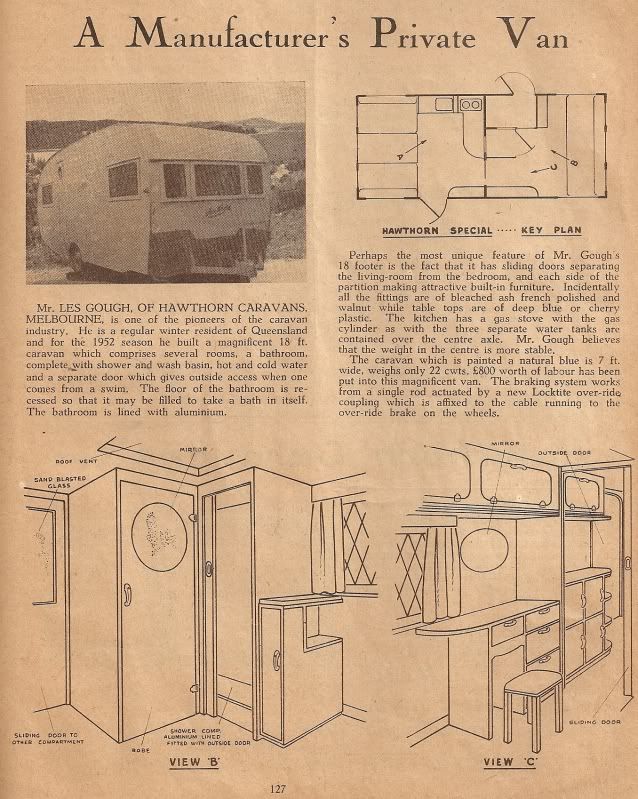 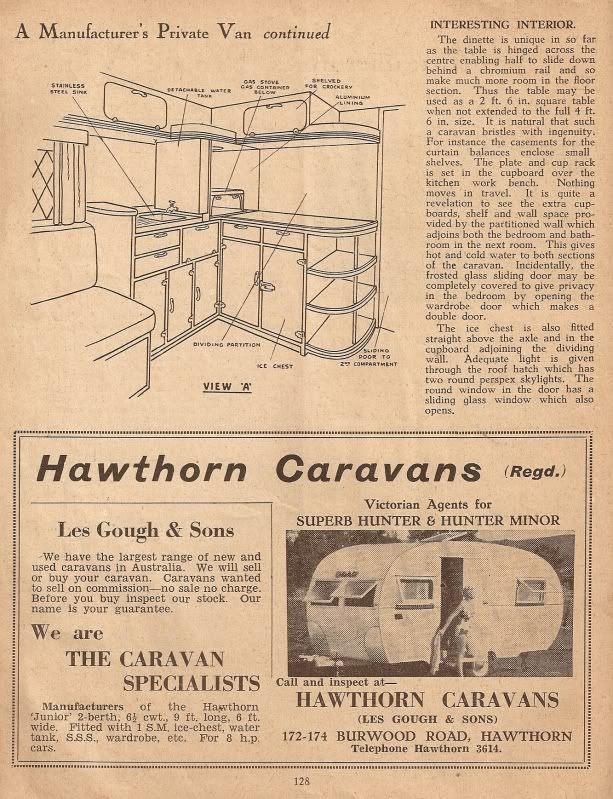 (Source: Keith Winser, Caravans and Touring Australia, Book 5, 1953, pp 127 & 128) Note that the van has leadlight windows like some earlier Hawthorn vans, and also that it has a door on either side of the van. The door on the off-side of the van is used to access the shower without having to go through the van. That is a feature which is sometimes seen on UK vans. This article confirms that Les Gough was a caravan manufacturer in his own right at this point. However, the second page also includes an advert which indicates that even at this point Hawthorn was an agent for Carapark caravans, and therefore selling other manufacturers' vans as well as building their own. Nevertheless, the only Hawthorn built caravan in the list of vans in the 1953 Winser is the 9 ft "Junior" also referred to in the above advert. No photo is provided. Don Ricardo |
|
|
|
Post by cobber on Sept 19, 2011 10:52:07 GMT 10
G'day Don R, Thanks for providing evidence that Les Gough did indeed build a caravan...... I still can't find evidence that he didn't  ..... I only said he didn't so you would find evidence that he did  . In the 1954 Caravan & Touring manual Hawthorn list a 9ft. AND a 12ft. (Hawthorn not listed at all in the 1957 ed.) I still want to see the chassis  Cobber. |
|
|
|
Post by Don Ricardo on Nov 23, 2011 21:50:08 GMT 10
Hi all, Earlier on this thread, I looked at the differences between some mid-50's Hawthorn caravans and caravans built by Rowvan. At first glance the caravans sold by these two makers appear similar, but a careful comparison showed that they were actually very different, and the indications are that though they were both built in the "South Australian style" they came from different manufacturers. A recent chance observation seems to indicate that the "South Australian style" Hawthorn vans were built by the same manufacturer as vans sold in NSW under the 'Windcutter by Castle' brand. Following is a picture of a Hawthorn van owned by Lacem:  Next is the Windcutter owned by Samson: 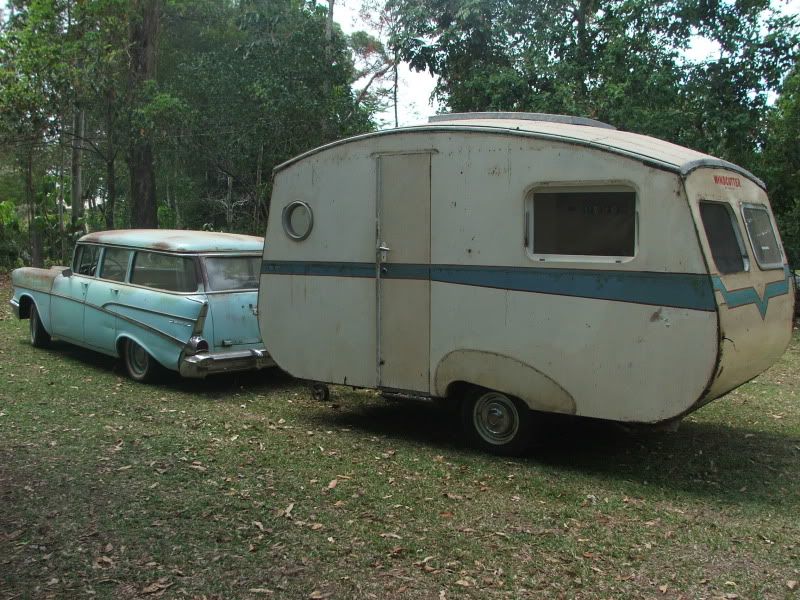 The Hawthorn is earlier than the Windcutter as indicated by the wooden framed windows on the former and aluminium framed windows on the latter. The Hawthorn is also shorter than the Windcutter. This is accounted for by the fact that the Hawthorn's layout consists of two bunk beds at the front, whereas the Windcutter has a dinette/two-berth bed at the front. Related to this difference in layout, the Hawthorn has a single small window at the front, while the Windcutter has two windows. However, while bearing these differences in mind, note: - The fact that, looking from the side, both vans have the same profile at the front and the rear.
- The front and rear walls meet the floor line in a smooth curve.
- The doors are similar in style, without any opening vent, opening at floor level without any obvious lip, and with the top of the door located the same distance from the roof line.
- Both vans have a porthole window in the same location.
One other similarity is revealed in the following photos of KB3's Hawthorn:  And Samson's Windcutter (now restored): 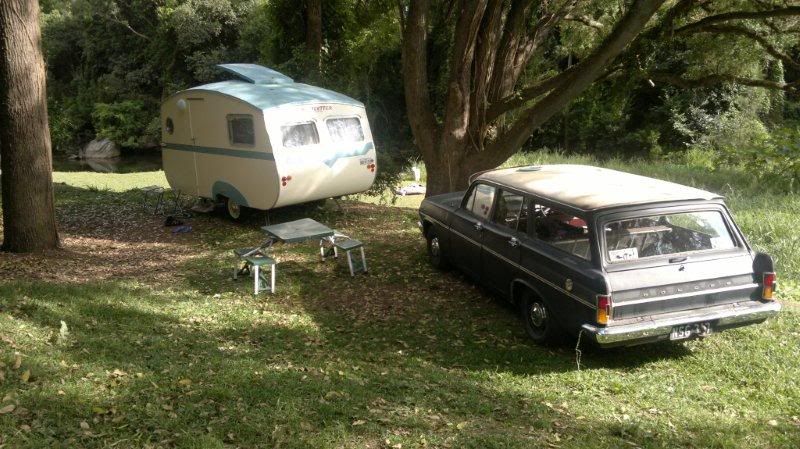 Both vans have a hatch which is hinged at the back rather than the front, which is relatively unusual. So it seems we have another piece of the Hawthorn/Windcutter puzzle, but we still don't know which SA-based manufacturer produced these vans.    Don Ricardo |
|
Trish_M
Full Member
   1950's Home Made Bondwood "Bettie Moonya"
1950's Home Made Bondwood "Bettie Moonya"
Posts: 275
|
Post by Trish_M on May 19, 2012 21:42:21 GMT 10
|
|